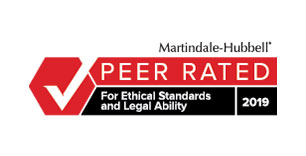Asbestos was used in the United States in a multitude of products for decades. While we’ve offered West Virginian’s our help filing claims on their behalf, we would like to take a moment and explain why asbestos is so dangerous.
In this post, we cover almost everything about asbestos from where it comes from and how it’s used to what to do if you or a loved one have been diagnosed with mesothelioma or any other asbestos-related disease.
If you have any questions about Asbestos, the diseases it causes, or how to file a mesothelioma claim, call our office today at 304-201-2425.
Where does asbestos come from?
Asbestos is a variety of naturally occurring minerals that readily separate into long, flexible, needle-like fibers.
These minerals come from metamorphic rocks found on every continent in the world. The main exporters of asbestos include Russia, Kazakhstan, and China. In the United States, there are many deposits in the western region and in mountain ranges near the East Coast, although they are no longer mined.
The fibers are used to strengthen and fireproof other materials used in buildings, appliances, and more.
Asbestos is dangerous when it is disturbed and enters the body. Those materials can become very dangerous, causing cancer and other diseases.
How was asbestos used?
Asbestos is highly resistant to heat, electricity, and corrosion. It also has high tensile strength and flexibility. Because of these properties, asbestos was paired with cloth, cement, plastic, and other materials to make many items.
Common uses for asbestos included:
- Home insulation
- Appliance insulation
- Electric wiring insulation
- Roofing shingles
- Vinyl flooring
- Brake pads
- Textured paints
- Ceiling tiles
- Fire-retardant clothing
- Cement pipe
- Gaskets
- Packing materials
However, these same useful qualities make exposure to asbestos dangerous and harmful.
What are common health-related issues due to asbestos?
If inhaled or swallowed, microscopic asbestos fibers become permanently trapped in a person’s body and cause inflammation, scarring, or genetic damage.
Asbestos exposure almost exclusively causes mesothelioma, a rare and aggressive cancer. Exposure can also cause asbestosis, a type of pulmonary fibrosis in which the lung tissue becomes scarred over time. Asbestos exposure can also cause other cancers like lung cancer, ovarian cancer, and laryngeal cancer.
If you have a history of asbestos exposure, be mindful of the following symptoms:
- Coughing
- Chest pain
- Shortness of breath
- Abdominal swelling and/or pain
- Changes in digestion or bowel habits
- Nausea
- Menstrual changes
- Back pain or pain during intercourse
- Fatigue
- Persistent hoarseness
- Difficulty swallowing
- The need to clear your throat often
Seek medical attention and schedule regular health screenings if you have been exposed to asbestos in the past.
Is asbestos currently banned?
Asbestos is not banned in the United States, but it is highly regulated by organizations such as the Occupational Safety & Health Administration (OSHA), the National Institute for Occupational Safety & Health (NIOSH), and the Environmental Protection Agency (EPA). The World Health Organization (WHO) also works to protect people from asbestos exposure on the job.
How can I protect myself from asbestos exposure?
When the public was beginning to learn about the connection between asbestos exposure and harmful diseases in the late 1970s, many manufacturers began finding and using suitable asbestos substitutes.
For example, polyurethane foam is a cheap and effective alternative to insulation that’s widely used today. Silica fabric and cellulose fiber are examples of other safer substitutes used by manufacturers.
If your home was built prior to the 1980s, it’s possible asbestos was used as insulation, in roofing or tiles, or in cement pipes. Asbestos particles are dangerous when they are disturbed and become airborne, where they can be inhaled. That’s why it can be so harmful when homes are remodeled or if buildings are destroyed.
If you have a home built prior to the 1980s, hire experts if you plan to remodel or remove walls. There is no “safe” level of exposure, which is why leaving asbestos-containing materials alone unless you have proper protection and knowledge of materials disposal.
Am I at risk of asbestos exposure?
Even though asbestos is not used as often today, older workers in certain occupations are still being diagnosed with asbestos-related illnesses because symptoms can take so long to appear.
The risk of health-related issues increases if you work directly with asbestos, in occupations or industries such as:
- Construction and demolition
- Firefighting
- Manufacturing and processing plants
- Steel mills
- Power plants
- Shipyards
- Mining sites
- Military service
- Electricity generation
In fact, about 27 million workers were exposed to asbestos between 1940 and 1979. Many employers failed to provide their workers with proper safety gear or neglected to warn employees of the dangers of asbestos.
To complicate matters, signs of mesothelioma may take decades to show up after a West Virginian was exposed to asbestos.
If you’re suffering from mesothelioma or other asbestos-related illnesses, an experienced mesothelioma attorney can help.
How can a mesothelioma attorney help me?
At Prim Law, we offer support for West Virginia individuals and workers who’ve been exposed to asbestos.
With our extensive database and documentation, Prim Law can find the appropriate parties responsible for your exposure to asbestos. We will hold them accountable for the pain and suffering you’ve endured, as well as medical costs and financial strain they caused.
Call Prim Law at 304-201-2425 to schedule a free initial consultation. We serve asbestos exposure victims in and around Hurricane, Scott Depot, Teays, Tornado, Winfield, Culloden, Milton, Cabell County, and Kanawha County.
You can fill out our online contact form here, and follow Prim Law on Facebook for more resources and news updates.



